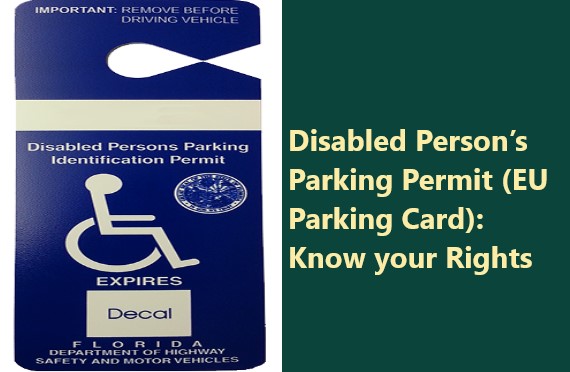A Disabled Person’s Parking Permit (also called EU Parking Card) is only issued to a person with a disability. The permit shows the name and photograph of the person it has been issued to. Your daughter cannot use your Disabled Person’s Parking Permit unless you are with her.
Only you can use it. However, you can use your permit for any vehicle you are travelling in, either as a driver or as a passenger. This means that if you are being driven at different times by different people you can bring the parking permit and display it in whichever vehicle you are using. So, if your daughter is driving you, she can use it to park her car in a disabled person’s parking space.
The permit allows you to use the public parking spaces assigned for vehicles being used by a person with a disability. These spaces or parking bays have the wheelchair symbol painted on the ground or have a sign with the wheelchair symbol displayed. Most accessible parking bays are located near amenities such as shops, post offices and schools.
Car parking spaces with the wheelchair symbol are usually wider than most other car parking spaces to allow drivers or passengers with a disability to get from their car seat to their wheelchair. If you travel to any EU country with your parking permit you can park in a disabled person’s parking space or bay.
The Disabled Person’s Parking Permit is administered by the Disabled Drivers Association of Ireland (DDAI) and the Irish Wheelchair Association (IWA). Both organisations provide detailed information on how to use and apply for the Disabled Person’s Parking Permit. In Ireland, an EU parking permit is issued for two years.





